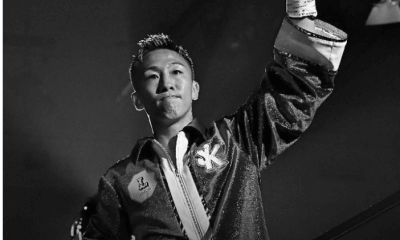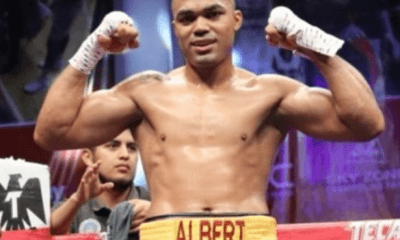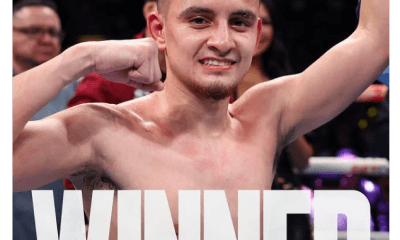Featured Articles
The Top Ten Super Featherweights of the Decade: 2010-2019
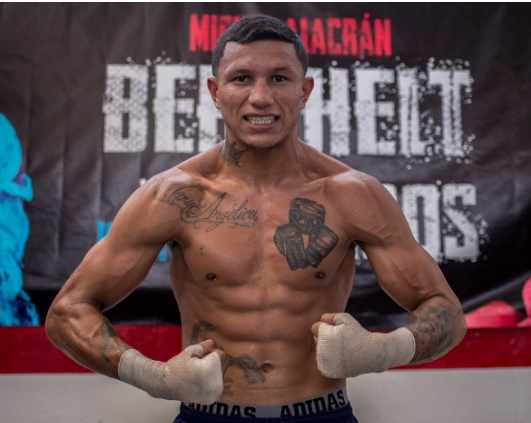
Super-featherweight has been refreshing after the minefield that was 140lbs and has contained the best fights I have reviewed during this series. There was a complication in that many of the top fighters of the decade only came to the dance once with an equal; there was far too much dusting of unranked fighters, journeymen and alphabet mandatories unqualified for the shot.
This has made the weighing of individual wins more pertinent than in other weight classes and you may find more words about given fights than is normal. Hunt some of those fights down if you missed them; I named this the most exciting division in boxing in 2016 and it certainly delivered.
Rankings are by Ring from January 2010 until October 2012 and thereafter by TBRB.
10 – Orlando Salido
Peak Ranking: 2 Record for the Decade: 10-4-2 Ranked For: 25% of the decade
We have run into some strange and interesting number tens during this series, but perhaps none more so than Orlando Salido. Siri, the veteran, the great survivor of the sub 135lb decade, makes the list essentially on the strength of two draws.
In April of 2014 Salido was spanked, fair and square, by Roman Martinez, the Puerto Rican, who used his equalising straight right hand to drop Salido and secured the decision over twelve. This was a punch Salido remained unable to neutralise even in their rematch fought five months later, Martinez managing to drop him once more, but in truth, Salido bossed their second encounter, ceaseless, blank-faced pressure catching up to the younger man who was lucky to escape with the draw. Salido, if not quite robbed, had been pick-pocketed.
The judging was perfectly reasonable in his next fight, a June 2016 draw fought with the mighty Francisco Vargas in one of the better fights of the decade. I scored it a draw, two of the judges scored it a draw, and while talk that Salido had the better of this fight too is overstated, he did not have the look or feel of a man defeated.
Salido won fights at the poundage, but nothing that meaningful. It is these drawn performances that put him in contention but the real reason he slips in are the shortcomings of his rivals for the spot. Albert Merchado defeated Jezzrel Corrales who was butchered by Andrew Cancio who was ripped up by Rene Alvarado. Juan Carlos Salgado and Argenis Mendez cancelled one another out and offered little besides, Gervonta Davis’s best win is number eight contender Jose Pedraza and the excellent Takashi Miura defeated the similarly ranked Gamaliel Diaz on his best night. In the end, by a process of painful elimination it became clear that the most reasoned argument was Salido, who probably should have been awarded a victory over Martinez (ranked 9 here) and who fought Vargas (ranked six) to a standstill.
09 – Roman Martinez
Peak Ranking: 2 Record for the Decade: 7-4-2 Ranked For: 68% of the decade
Roman Martinez had a strange and troubling super-featherweight career defined by oddities and questionable draws. He was lucky to get away with the share against Juan Carlos Burgos in 2013 and equally so against Orlando Salido in their 2015 rematch and had either of these fights been scored against him he likely would have had to make way for his conqueror. Draws are what came back though so he pitches up here ahead of both in the number nine spot.
Key to his placement is his performance in his first fight with Salido. Martinez boxed with the cooler head of a more experienced fighter that night, staying organised despite being subjected to ceaseless pressure, moving laterally at speed and countering Salido with consistent, clean punches.
Martinez also turned in a spirited, clever performance against number ten contender Diego Magdaleno two years prior to his meeting with Salido, taking an earned split decision. This second win over a made man threatens to propel him up a list comprised in part of one-hit wonders but those draws, and his being on the fortunate end of them, pin him back.
Unexceptional, that right hand excepted, Martinez has remained a figure of significance within the super-featherweight division for nearly 70% of the decade; this, in tandem with the Salido victory makes him difficult to exclude.
08 – Ricky Burns
Peak Ranking: 2 Record for the Decade: 16-6-1 Ranked For: 11% of the decade
Ricky Burns is another reason for Martinez ranking no higher than nine. In short, it is difficult to rank Burns any higher and more difficult still to rank Martinez ahead of Burns, for the best of reasons: Burns beat him.
It remains the most outstanding performance of Ricky’s career, a performance of great competence over a fighter who echoed his best attributes. Both these men were superbly conditioned and capable of performances of real courage but were limited in both power and speed. Burns, far and away the lesser of the two punchers and with no equivalent of the Martinez right hand, was firmly outgunned. Technical surety and superb temperament brought him the clean win. Burns was hurt badly in the first round by one of those Martinez right hands; by the end of the sixth he all but had the fight wrapped up having won every round since.
Martinez wasn’t for quitting of course, and he damaged Burns with surging, wild attacks through the middle rounds to narrow the fight up but Burns closed like a champion, winning the eleventh and twelfth with room to spare. It was a rousing performance that demonstrated everything Burns did well. One of his generation’s underrated jabbers, he was cool under the most vicious of fire and brave to a fault.
Burns exited 130lbs the following year, unbeaten at the poundage that decade, 5-0, having mastered, in Martinez, a fighter of worth.
07 – Rances Barthelemy
Peak Ranking: 3 Record for the Decade: 25-1-1-1 Ranked For: 14% of the decade
The Cuban Rances Barthelemy may seem a rather perverse choice at number seven given that he was never ranked higher than three divisionally, but he had Mikey Garcia and Takashi Uchiyama to contend with. He met neither man in the ring, but his performances in his two fight series with Agenis Mendez are more than enough to justify his placement on this particular list.
In their first fight, in January of 2014, Barthelemy seemed a fighter unassailable. His left hook seemed ear-drum shattering; his body-punches drew air in through the collective teeth of those who witnessed them; his jab put commentary in mind of George Foreman. Mendez landed as few as three punches in the first. The left uppercut, left jab and left hook Rances landed in combination to drop Mendez in the second was a thing of absolute beauty; the two wide hooks he landed from square shortly thereafter to knock Mendez out, less so, not least because they came after the bell.
Barthelemy’s knockout victory was changed to a no-decision, the correct decision, and a rematch was ordered.
Barthelemy was not the fighter he appeared to be in that first astonishing fight with Mendez, but he looked the clear superior of Mendez once more, taking a clear decision win despite dropping points for clumsy low blows in both the ninth and tenth round. Mendez, it should be remembered, was no joke. The world’s number two contender, he had split a series with the excellent Juan Carlos Salgado, winning their second fight by way of fourth round knockout and rendering himself one of the best super-featherweights in the world. Barthelemy usurped him, then defeated Argentine tough Fernando David Saucedo and departed for lightweight.
That makes him undefeated at the poundage and in combination with those two superb wins, he’s earned the number seven spot.
06 – Francisco Vargas
Peak Ranking: 2 Record for the Decade: 26-2-2 Ranked For: 43% of the decade
Japanese puncher Takashi Miura, ranked two, is the key fight of Francisco Vargas’s career, the totality of which was boxed between January 2010 and December of 2019, almost all of it at the 130lb limit, no small matter in rating him here.
Miura, an onslaught southpaw who traded on thudding punches and sheer aggression had put away a series of good opponents in the course of raising and defending his strap, key among them Gamaliel Diaz, who he had dispatched in nine in 2013; Vargas met him in 2015 and in a thrilling first round took his legs and challenged his heart with a zinging right-hand wedded to some exceptional short-arm work behind. Takashi, too hard to succumb, battled back and a superb fight was sparked, dominated early by Vargas to the point of one-sidedness. Takashi though seemed wrought of iron, insidiously fighting back before dropping Vargas with a stunning one-two behind a delightful uppercut.
This was a nice wrinkle to the fight, Takashi suddenly producing superb, technically adept punches to swing it into his lane, but it was Vargas now who took a turn in proving his heart and guts. Cut, bruised, Vargas rallied thrillingly in the sixth round as the two exchanged vicious body shots and opposed straights. Behind on the cards, hurt and then punished at the end of the eighth, Vargas sent Takashi scrambling to and then from the canvas in the first seconds of the ninth before blasting him out to win perhaps the best fight of the super-featherweight decade by way of stoppage. It was an exceptional performance.
Almost as astonishing was Vargas’s first fight of the following year, against Orlando Salido. A wonderful ebb and flow war, savage in culture, the official scorecards read 115-113 to Vargas and 114-114 twice, which echoed my own.
Worn by these battles, Vargas was eventually chased from the division by Miguel Berchelt. As we shall see, there is no shame in that.
05 – Mikey Garcia
Peak Ranking: 2 Record for the Decade: 22-1 Ranked For: 11% of the decade
Mikey Garcia, fleeting as always, spent a short spell in the rankings at 130lbs but also served a modicum of his apprenticeship there, putting meat on the bones of his 2013/14 campaign. In these years, Garcia bought the number five spot on this list.
In 2013 he met Roman Martinez, no slouch as we have seen, and who had a good first round; but in the second Garcia established that glorious left-handed jab as Martinez, content to wait outside, seemed lost. Then Martinez sprang his trap, the same trap he sprung against Salido, that wrought straight right and Garcia was on the seat of his trunks looking up.
He was also calm personified, reassuring his corner, making eye contact with the referee then up at six and took control of the fight. That left jab made way for the straight right which in turn made way for the left hook, a staged attack any general would be proud of. Martinez was finished in eight, struggling desperately for breath behind a superb left hook to the body.
Three months later, Garcia met Juan Carlos Burgos who was coming off the rough end of two split draws. Burgos made it difficult for Garcia early with his range but once Garcia found him, he won every remaining round.
Garcia dashes through divisions so quickly it is hard for him to make a meaningful impact and he was not helped at 130lbs by contractual disputes which kept him out of the ring for some months; when he returned it was as a lightweight. Here, there are enough shallow but exciting legacies to see him into the top five. Garcia’s style may not inspire passion, but it is to be admired.
04 – Jezzrel Corrales
Peak Ranking: 2 Record for the Decade: 22-2 Ranked For: 23% of the decade
Jezzrel Corrales missed weight in October of 2017 for his match with Alberto Machado and was promptly stopped in the eighth round of a lacklustre performance. At the 130lb limit, he was never beaten.
It is fitting, too that he is the only member of the one-hit wonder club that makes the top five. His one hit is actually two, and far and away the best of the bunch.
In 2016, Takashi Uchiyama was the undisputed number one super-featherweight on the planet and remained in the habit of importing and dominating quality fighters from outside his native Japan. Corrales, a Panamanian stylist, seemed just the latest in a long line to leave Japan with nothing but wounds and Yen.
Corrales claimed ring centre, unafraid, rearing and ducking the worst of Uchiyama’s attentions, punching at every opportunity. This is hardly a layered plan but Corrales has an equaliser as good as a poison-speared punch: he is among the fastest-handed fighters on this list. In the second, he moved off before bringing Uchiyama back to ring centre and pot-shotted, especially with his left. Repeatedly feinting with a southpaw jab to the body, he bought an Uchiyama counter then blasted over a lighting quick straight that dropped Uchiyama and heavily. The Japanese’s reign was essentially over, although he was able to stagger his way through to the final seconds of the round before succumbing.
Jezzrel Corrales owns the single best win of any fighter on this list.
He arguably owns the second best, too, returning to Japan for a rematch eight months later, once again triumphing, this time on the cards. Flashed off balance in the fifth, Corrales nevertheless earned a decision, the fact that it only came on two of the three cards probably flattering Uchiyama.
A strange, pawing, dipping fighter, Corrales interested me from the start with that low lead, varied feints and riffing style. He achieved little else of note divisionally but undoing the clear divisional number one on two separate occasions is more than enough to earn him a top five spot.
03 – Vasyl Lomachenko
Peak Ranking: 1 Record for the Decade: 14-1 Ranked For: 18% of the decade
Too low?
Arguably, but for anyone who has been tuning in regularly, it’s clear that these lists are driven not by the how but the who; Vasyl Lomachenko receives maximum points for the how, but in terms of the who, he really does come up short. Clearly better than the one-hit wonders that populate much of the rest of the list, he is clearly worse off than the men ranked above him. Lomachenko’s assault on lightweight was all conquering and saw him outwit and outhit the best the division had to offer, at 130lbs he never faced a man in the top five.
The highest ranked fighter Lomachenko met at 130lbs was Roman Martinez, number six. Martinez, a fighter we have run into over and again, finally reaches the end of his super-featherweight journey. Lomachenko tore him apart like a wolfpack before dispatching him with an uppercut/hook combination as astonishing as anything I have seen. In his next three fights, Lomachenko forced the retirements of three different men, most impressively Nicholas Walters, then met with the man that makes his ranking so malleable: Guillermo Rigondeaux. Lomachenko beat Rigondeaux clean and clear; it was not a close fight. Rigondeaux retired in his corner with an injury but did so after being outclassed by the better man. The problem is that Rigondeaux, a genuine pound-for-pound force moved two weight classes north to make the contest happen. So how much meaning should be allowed? The final word, perhaps, should belong to Lomachenko himself:
“This is not his weight, so it’s not a big win for me.”
Rigondeaux achieved nothing at 130lbs, before or since. That is weighted here – Lomachenko ranks three.
02 – Takashi Uchiyama
Peak Ranking: 1 Record for the Decade: 11-2-1 Ranked For: 61% of the decade
Takashi Uchiyama was the darling of the hardcore boxing fan in the early part of the decade. When he met Juan Carlos Salgado in the first month of 2010 it was not the slipping version that would go 1-1 with Argenis Mendez in coming years, but rather the monster that had knocked out no less a figure than Jorge Linares the year before – in one round.
Uchiyama met Salgado ring centre and established himself as the more accurate and heavier puncher then went to work breaking him down. A technically superb performance, it was capped by a savage assault in the eleventh which culminated in a hooking clinic in the twelfth, for all that it was a tiring one, followed by a vicious stoppage with just seconds remaining. The purists were hooked.
In truth, this was something of a summit for Uchiyama, which was a shame because the feeling was he might make pound-for-pound. He never left his Japanese stronghold and the invitees were of middling quality. Still, he inflicted an impressive number of first defeats and in 2011 imported a slipping Jorge Solis, against whom he perpetrated an astonishing one-punch knockout in the eleventh having arguably won every single round up to that point.
There were quick knockouts, too, like the one he scored against the prodigy Jomthong Chwatana and when he needed the cards they were usually wide. His shocking defeat at the hands of Corrales and his insistence upon remaining home keep him from the top spot here, but that’s a judgment call. Placing him at the top would be valid.
01 – Miguel Berchelt
Peak Ranking: 1 Record for the Decade: 37-1 Ranked For: 27% of the decade
I suspect that this is my first genuinely controversial placement of the series but justifying heralding Miguel Berchelt as the most accomplished super-featherweight of the decade will be easy. That is because he is the right choice.
First, there is his paper record, which is one of the best on the list. Berchelt (pictured) suffered a single loss in 2014 and since then has smeared a series of ranked men all over the ring, mostly by way of knockout. He has fewer losses than Uchiyama, more wins, and more wins against ranked opposition. Although Lomachenko has no losses at the weight, he has significantly fewer wins and fewer wins against top men.
Most of all, what impresses about Berchelt is that he has been doing his business among the top five. While Lomachenko was matched exclusively outside the absolute best of the best, Berchelt has operated frequently in such company.
Most of all, it his domination over that company that has impressed.
Berchelt took the step up against Francisco Vargas in 2017 and handed the superb Vargas a vicious beating. Vargas out-sped Berchelt by a margin which was a problem for him for perhaps four minutes. Berchelt’s greatest strength is his ring-awareness; he knows where he is at all times and he knows where his opponent is at all times. This perennially puts him in position, or something like it; Vargas meanwhile was relying on technical ability and speed to keep him in control. He was repeatedly hurt in the second in what looks in retrospect to be the beginning of the end. After losing most of the intervening rounds in a fight that mounted in intensity and savagery as it progressed, Vargas was stopped in the eleventh, his face coming apart.
In his next fight Berchelt, not one for resting upon laurels, matched number four contender Takashi Miura unveiling a new horror at championship level. Berchelt, who is the best puncher in the super-featherweight division, is also the best mover. He circled Miura as mercilessly as he beat him, bringing the brave Japanese onto a series of stiffening punches. By the fifth, Miura had given up boxing and pressure both in favour of single-shot hail-Mary left hands, some of which landed but never in quantities high enough to win him a single round on my card, or the card of judge Max DeLuca.
The following year, 2018, Berchelt thrashed mortal enemy and number five contender Miguel Roman in nine then rematched Vargas. By now he was peaking. Compact shots follow each other quickly to the target, his hand speed maximised on combination punching, but it is his accuracy during clutch exchanges that sets him aside. Berchelt cracked Vargas in just six rounds and exited the decade the unequivocal number one active super-featherweight. Uchiyama was ranked number one in January of 2010, and it is fitting that these two duke it out for the decadal top spot.
Berchelt is my choice based upon his having more wins, fewer losses and his having beaten more highly ranked fighters.
The other lists:
Check out more boxing news on video at The Boxing Channel
To comment in this story in the Fight Forum CLICK HERE
-

 Featured Articles3 weeks ago
Featured Articles3 weeks agoThe Hauser Report: Zayas-Garcia, Pacquiao, Usyk, and the NYSAC
-

 Featured Articles2 weeks ago
Featured Articles2 weeks agoOscar Duarte and Regis Prograis Prevail on an Action-Packed Fight Card in Chicago
-

 Featured Articles1 week ago
Featured Articles1 week agoThe Hauser Report: Cinematic and Literary Notes
-

 Book Review4 days ago
Book Review4 days agoMark Kriegel’s New Book About Mike Tyson is a Must-Read
-

 Featured Articles4 weeks ago
Featured Articles4 weeks agoManny Pacquiao and Mario Barrios Fight to a Draw; Fundora stops Tim Tszyu
-

 Featured Articles4 weeks ago
Featured Articles4 weeks agoArne’s Almanac: Pacquiao-Barrios Redux
-

 Featured Articles3 weeks ago
Featured Articles3 weeks agoRemembering Dwight Muhammad Qawi (1953-2025) and his Triumphant Return to Prison
-
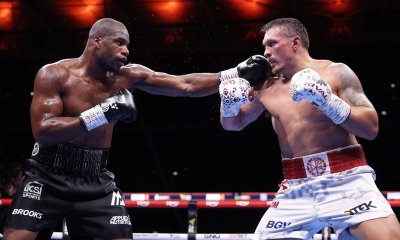
 Featured Articles4 weeks ago
Featured Articles4 weeks agoOleksandr Usyk Continues to Amaze; KOs Daniel Dubois in 5 One-Sided Rounds






